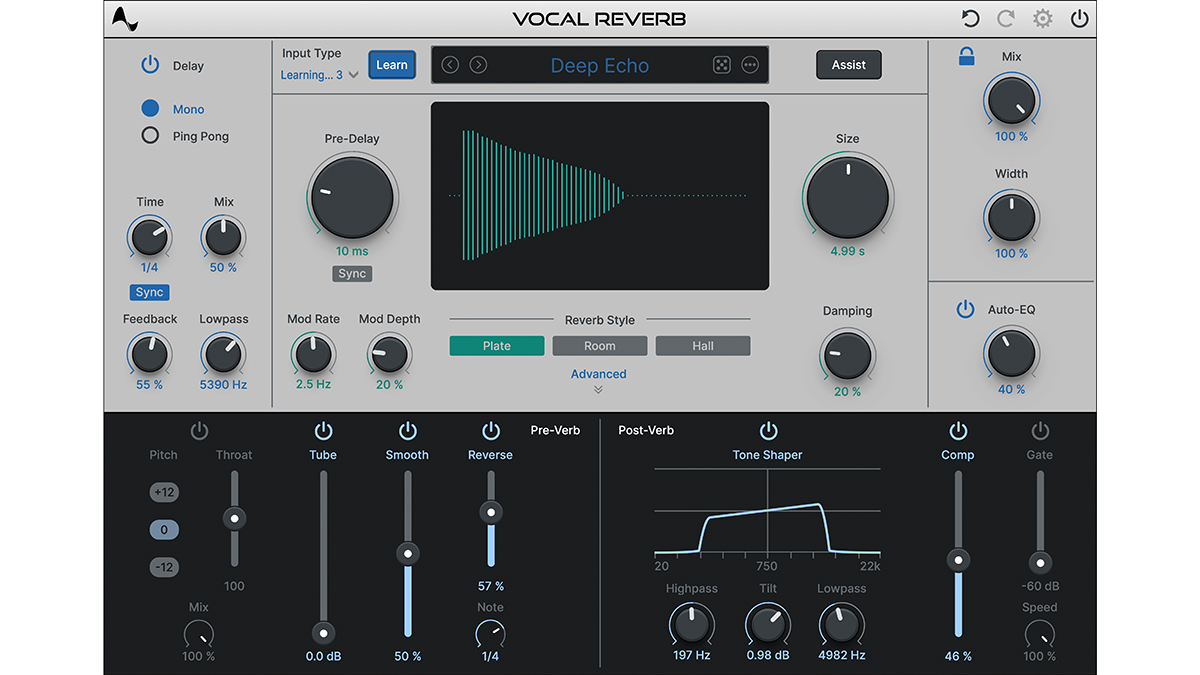Antares’ Vocal Reverb plugin promises to make your singing sound all the sweeter (with a little help from AI, of course)
It also uses Auto-Tune pitchtracking to tune-up your tails
The days when Antares only did Auto-Tune are long gone; the company now offers a whole range of plugins (including a lot of versions of Auto-Tune, it has to be said), the latest being the Vocal Reverb.
And guess what? This is designed to help you create that perfect vocal reverb sound. Who’s have thought? What’s more, it uses AI to help you do it quickly, recommending a starting point that you can then tweak to taste.
There is some Auto-Tune special sauce in here as well - proprietary Auto-EQ technology uses the software’s pitch tracking to clean up the reverb tail. It does this by tracking the singer’s pitch and dynamically reducing the fundamental frequency range in the tail; the theory is that this results in a reverb that blends musically with the vocal itself.
You can choose from three reverb algorithms (Hall, Plate, Room) and two delay types (Mono and Stereo Ping Pong). Open up the Advanced panel and you also get access to five Pre-Verb effects (Pitch, Throat, Tube, De-Esser, Reverse) and five Post-Verb Effects (Auto-EQ, Tone Shaper, Compressor, Gate, Width). A collection of artist presets is included, too, covering “various vocal styles and moods”.
Vocal Reverb is available as a perpetual licence for $129/£128, and is also included in the Auto-Tune Unlimited subscription bundle, which costs $24.99/mo or $174.99/year. You can try this free for 14 days, regardless of whether you’ve had a free trial or subscription in the past.
Find out more on the Antares website.

Get the MusicRadar Newsletter
Want all the hottest music and gear news, reviews, deals, features and more, direct to your inbox? Sign up here.



I’m the Deputy Editor of MusicRadar, having worked on the site since its launch in 2007. I previously spent eight years working on our sister magazine, Computer Music. I’ve been playing the piano, gigging in bands and failing to finish tracks at home for more than 30 years, 24 of which I’ve also spent writing about music and the ever-changing technology used to make it.









